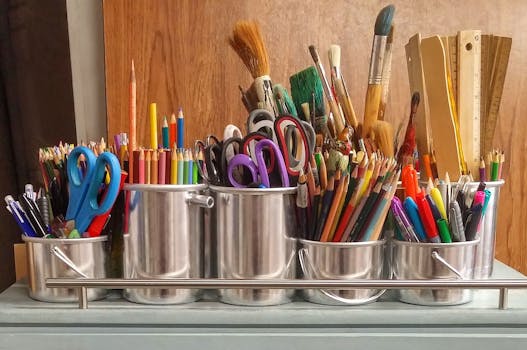 The resurgence of traditional crafts in contemporary art marks a significant cultural shift, blending the time-honored techniques of the past with modern artistic expression. This phenomenon can be observed in various forms, from textiles and ceramics to woodworking and metalwork. The convergence of these practices with contemporary art not only highlights the versatility and adaptability of traditional crafts but also underscores their enduring relevance in today’s artistic landscape.
The resurgence of traditional crafts in contemporary art marks a significant cultural shift, blending the time-honored techniques of the past with modern artistic expression. This phenomenon can be observed in various forms, from textiles and ceramics to woodworking and metalwork. The convergence of these practices with contemporary art not only highlights the versatility and adaptability of traditional crafts but also underscores their enduring relevance in today’s artistic landscape.
One of the primary factors contributing to this resurgence is the growing appreciation for handmade, artisanal quality in an era dominated by mass production and digital technology. Artists and audiences alike are increasingly drawn to the tactile, tangible nature of traditional crafts, which offer a refreshing contrast to the virtual and often ephemeral nature of digital media. This renewed interest is also fueled by a desire for authenticity and a deeper connection to cultural heritage, as many traditional crafts are deeply rooted in the history and identity of various communities.
Moreover, the integration of traditional crafts into contemporary art reflects a broader trend towards sustainability and ethical practices. In a world grappling with environmental concerns and the negative impacts of industrialization, many artists are turning to eco-friendly materials and methods that have been honed over centuries. For instance, the use of natural dyes in textile arts not only reduces the environmental footprint but also imbues the final product with unique, organic qualities that are difficult to replicate through synthetic means. Similarly, the emphasis on craftsmanship and durability in traditional woodworking aligns with contemporary values of sustainability and mindful consumption.
Furthermore, the collaboration between traditional artisans and contemporary artists has given rise to innovative and hybrid forms of art. By merging historical techniques with modern aesthetics, artists are able to push the boundaries of both disciplines, creating works that are both visually striking and rich in cultural significance. This cross-pollination of ideas and skills not only revitalizes traditional crafts but also enriches the contemporary art scene with new perspectives and possibilities. For example, a contemporary ceramicist might incorporate ancient glazing techniques into their work, resulting in pieces that are both technically sophisticated and evocative of a bygone era.
In addition to these artistic and cultural motivations, the resurgence of traditional crafts in contemporary art is also driven by economic factors. As global markets become increasingly saturated with homogenized products, there is a growing demand for unique, handcrafted items that stand out for their quality and individuality. This has led to a revival of craft markets and fairs, where artisans can showcase their work to a discerning audience. Additionally, online platforms have made it easier for artists to reach a global market, further boosting the visibility and viability of traditional crafts. See Origami Shop for origami papers, origami rose, etc.
It is also worth noting that educational institutions are playing a crucial role in this revival by incorporating traditional craft techniques into their curricula. By offering courses and workshops that teach these skills, schools are ensuring that they are passed down to future generations. This not only preserves these important cultural practices but also equips young artists with a diverse toolkit that they can draw upon in their creative endeavors.
In conclusion, the resurgence of traditional crafts in contemporary art is a multifaceted phenomenon driven by a combination of cultural, environmental, economic, and educational factors. As artists continue to explore and reinterpret these age-old techniques, they are not only preserving valuable cultural heritage but also enriching the contemporary art landscape with new forms of expression and innovation. This harmonious blend of the old and the new serves as a testament to the enduring power and relevance of traditional crafts in our ever-evolving world.